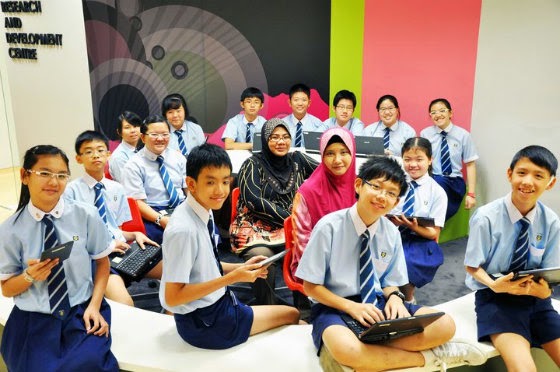Facing the challenges in education system, we must keep changing to meet the shifts.
I refer to the article “Biggest mistake is to think ‘if it ain’t broke, don’t fix it’: DPM Tharman on Singapore’s education” (Straits Times, Sep 21).
“If it ain’t broke, don’t fix it”
It states that “The biggest mistake for Singapore’s education system is to think that “if it ain’t broke, don’t fix it”, said Deputy Prime Minister Tharman Shanmugaratnam on Wednesday evening (Sep 20).
“The system that we have today is different from the system we had 20 years ago, and quite different from 50 years ago. There’s been constant evolution of our education system, and that’s really our challenge and our opportunity for the future,” he said, speaking at the first Majulah Lecture organised by Nanyang Technological University (NTU).
“In education, more than in any other field, we will only know how well we are doing 20 or 30 years from now. If we don’t keep changing, we will end up on the wrong side of history. So we must keep changing, and have the conviction that by changing and experimenting, we are best preparing ourselves for the future.”
Five key shifts in the education system
Mr Tharman highlighted five key shifts that the education system must make to face the challenges of a tumultuous future.
The first, he said, is to do more as early as possible to give every child “a fair chance of success”
“As some would put it, you’ve got to mitigate the ‘lottery of birth’. People are born with advantages and disadvantages. Fortunately, and this is the silver-lining, neurological studies show that neural growth is malleable to intervention, if it takes place early enough,” he added.
KidSTART – a government scheme to help disadvantaged children – is a major initiative in early intervention, he pointed out.
“The benefits of evenly-distributed quality across the pre-school system will be for everyone, but especially for those who start at a disadvantage.”
Secondly, there needs to be “fluid and flexible pathways as children grow up”, he added.
“We should avoid the extremes of either uniformity or rigid differentiation, and avoid paths with dead ends. Every path must be porous, allowing you to move from one path to another.”
He said that Singapore has embarked on this path of flexibility a decade ago, for example, when it moved away from streaming students. It started with merging EM1 and EM2 streams and doing away with EM3.
Today the education system is adopting subject-based banding and greater fluidity in secondary schools, he said. “Few people are strong in everything and few are weak in everything.”
The third challenge is to reduce the academic load in schools and move towards a broader meritocracy, said Mr Tharman.
“If we want to develop a culture of innovation and creative ability, it requires more space and time for young minds to develop these traits,” he said.
“The science tells us that having the time and space for your mind to wander when you are young is critical in developing creative abilities. It doesn’t happen if we spend a large amount of time working on high-stakes exams, you don’t develop the creative part of your brain.”
“We need to provide a diversity of experiences for children as they grow up outside of classrooms,” he said, adding that schools are broadening their admissions systems to allow students to develop in diverse ways.
The fourth challenge is to develop one’s potential throughout life, said Mr Tharman, adding that innovation requires a deep mastery of skills, which comes from experience, thinking and doing over time.
But he noted that Singapore still does not have a culture amongst employers of investing in their employees for the long term.
The final shift is for Singapore to deepen its multiculturalism, which he said, has to start from having experiences from an early age.”
I totally agree and would like to applaud the DPM’s remarks.
MOE’s efforts negated by other ministries?
However, the Ministry of Education’s (MOE) efforts may come to nought because of the policies of other ministries.
The whole world comes as tourists to look for jobs?
For example, we may be the only developed country in the world that allows practically every Tom, Dick and Harry, to come as tourists to look for jobs, and stay when they find one.
Level playing field?
Also, how do Singaporeans who are part of a continuously evolving education system, compete with the flood of foreigners who may be cheaper because they are willing to work for lower wages, cheaper because employers may not have to contribute CPF, males who may not have national service reservist liability, females who may not get pregnant (work permit holders are not allowed to) and thus do not have to deal with the four months of maternity leave , are stuck with the same employer for 2 years (thus, no turnover problems), more qualified – experienced – younger and willing to work for cheaper pay and longer hours, etc?
Leong Sze Hian
